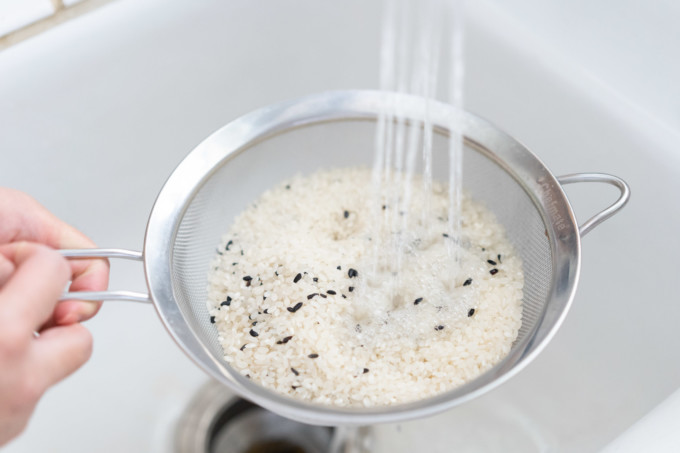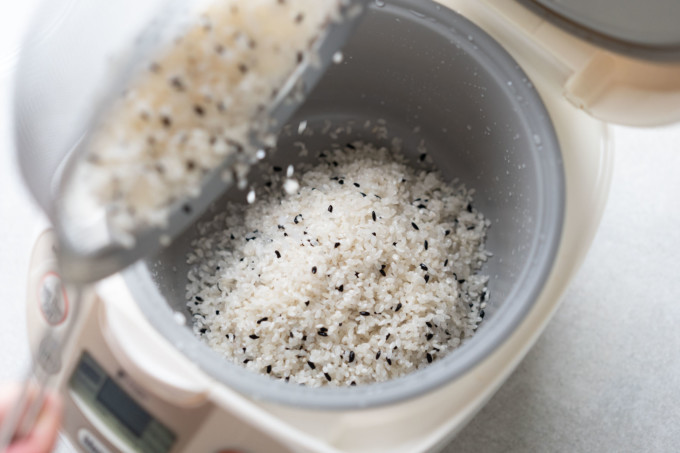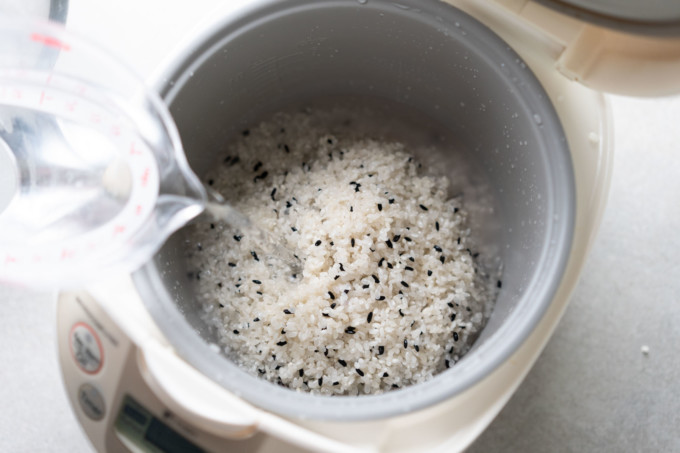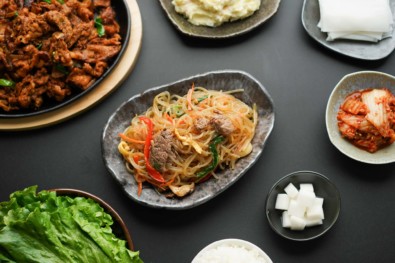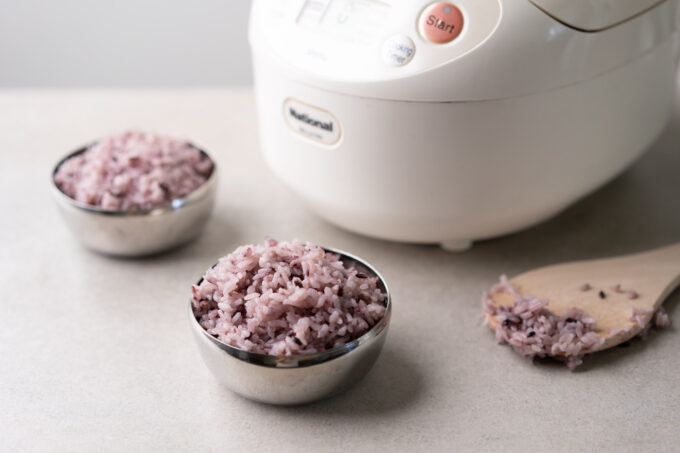
Slightly nutty, plump, and chewy with vibrant hues of violet, this Korean purple rice recipe is satisfying to eat because of the texture, but it also has added health benefits of the black rice. If you’ve ever wondered how to make the purple-colored side dish commonly found at Korean restaurants, this recipe will show you an easy ratio to follow for your next dinner.
What is Korean purple rice?
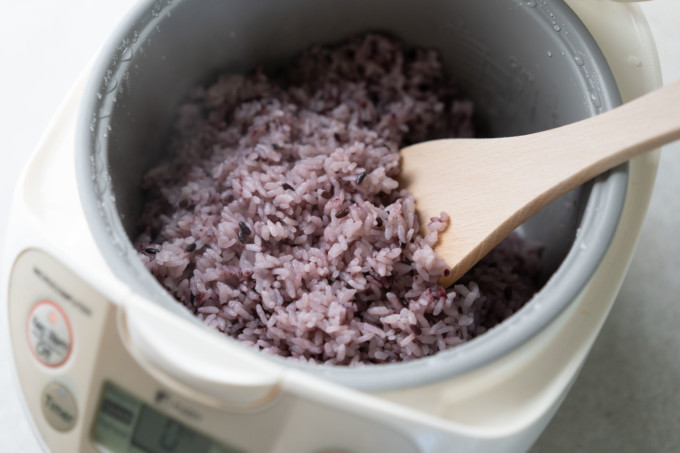
Purple rice, or heukmi bap in Korean, is a type of rice that has a blend of black and white rice that turns to a vibrant lavender after it’s cooked. It’s used like white rice as a side dish to some tasty Korean dishes like pork bulgogi, inside kimbap (Korean sushi rolls), or with Korean bbq.
Black rice is also known as “forbidden rice.” This name came from Ancient China when black rice was known for its health benefits and difficulty in cultivation, so it was forbidden to eat unless you were a royal. Black rice has a nutty and mild flavor, but a chewier texture than traditional white rice.
These days, black rice is still known for its added health benefits as its a good source of protein and fiber, but it’s also rich in antioxidants like anthocyanin, which is anti-inflammatory.
Purple rice is not to be confused with another type of Korean rice called multi-grain rice, or Japgokbap, which has a different blend of garbanzo beans, red lentils, and other grains.
Types of rice to use
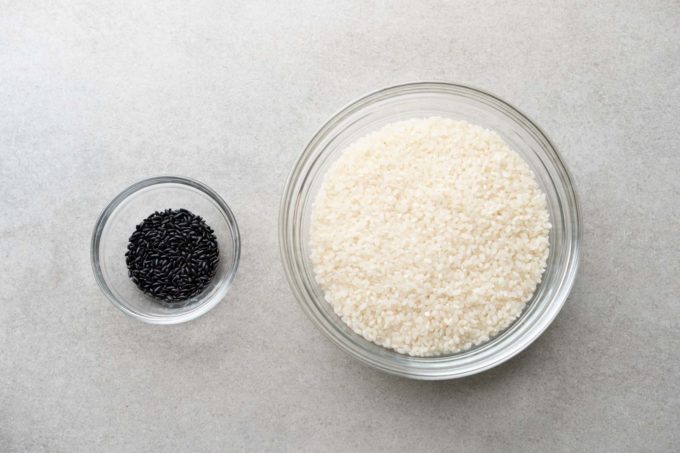
To make Korean purple rice, you need a combination of white rice and black rice. I prefer short-grain white rice because it’s much stickier and plumper in consistency than long grain rice, and I think it pairs well with the chewiness of the black rice.
This recipe is very similar to my other recipe that teaches you how to cook rice in a rice cooker. I like to use short-grain white rice from Tamaki Gold short-grain rice (Amazon). Or if I’m in a pinch and can’t find short-grain, I use medium-grain rice from Koda Farms Kokuho medium grain rice (Amazon), and Koshihikari short-grain rice (Amazon).
I picked out short-grain black rice at my local H-Mart, but they also sell black rice at other Asian stores like 99 Ranch. When picking out black rice, make sure you read the label because black rice comes in glutinous and non-glutinous varieties.
This will typically read as sweet black rice or just black rice. Using sweet black rice will give you a stickier consistency than non-glutinous black rice. I like the chewiness of non-glutinous rice, so I am using non-glutinous black short-grain rice for this recipe.
Purple rice blend
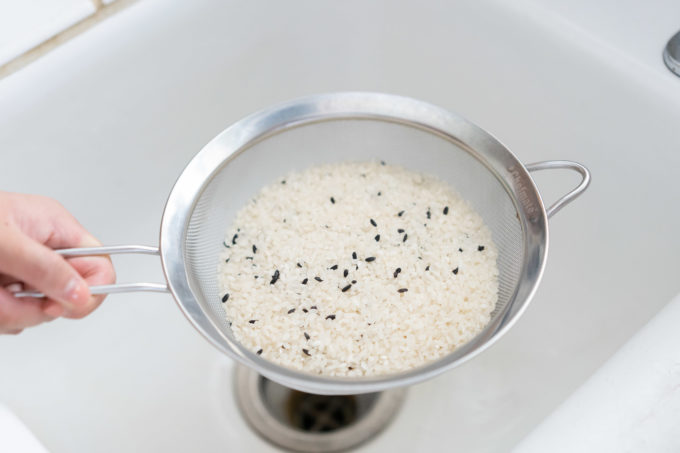
You don’t need to add too much black rice to your white rice to get that vivid purple hue. The next time you want to eat purple rice, use this simple ratio of 1:32. For every cup of short-grain white rice, you need half a tablespoon of black short-grain rice.
Here’s a breakdown based on serving size:
| # of servings | Short-grain white rice | Short-grain black rice | Water |
|---|---|---|---|
| 2 | 1 dry measuring cup | 1/2 tbsp | 2 liquid measuring cups (16 fl oz) |
| 4 | 2 dry measuring cups | 1 tbsp | 4 liquid measuring cups (32 fl oz) |
Purple rice vs black rice
The difference between purple rice and black rice is that purple rice is a mixed combination of white and black rice. The small amount of black rice added to the white rice creates a vibrant purple hue once it’s cooked.
Black rice vs black glutinous rice
Black rice and black glutinous rice differ in the same way white rice and white glutinous rice differ. While glutinous rice is much more sticky in texture and slightly sweet, non-glutinous rice has more separated grains, even short-grain rice.
Is Korean purple rice healthy?
Korean purple rice has added benefits since it’s mixed with black rice. Some of these nutritional benefits are anti-inflammatory antioxidants and more fiber and protein. Since black rice has more nutritional value than plain white rice, Korean purple rice is a healthier option.
Here are more Korean recipes if you want to try to make them at home, gamja salad, kimbap, Korean fried chicken, chicken-mu, and even some Korean dipping sauces.
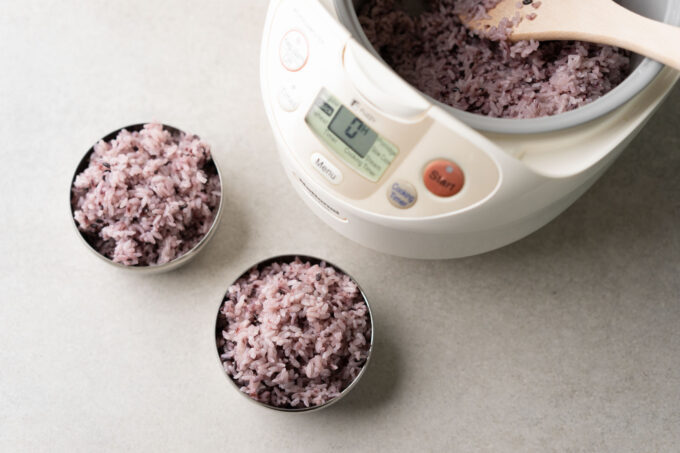
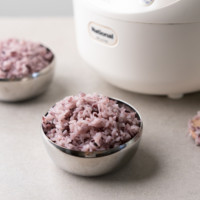
Korean Purple Rice (In a Rice Cooker)
Ingredients
- 2 c short-grain white rice
- 1 tbsp short-grain black rice
- 2 c water plus more for rinsing
Equipment Used
- Strainer
- liquid and dry measuring cups
- rice paddle
Instructions
- Measure the short-grain rice and black short-grain rice.
- In a strainer under running water, rinse the rice until the water runs clear.
- Transfer the rice into the rice cooking pot.
- Pour the water over the rice and use your hands to flatten the top layer of the rice, so it sits evenly across the pot.
- Close the lid and start the rice cooker using the standard rice setting.
- When the rice is finished, leave it to rest for five minutes with the lid closed. Open the lid and use the rice paddle to fluff up the rice. Serve immediately.

